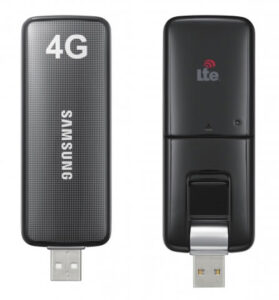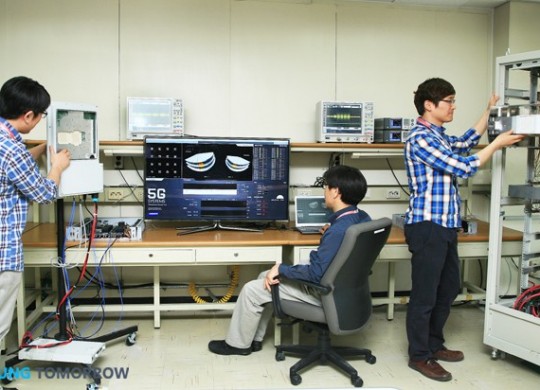All those who use their phones to access the internet will undoubtedly have heard the words “3G” and “4G” at some point in the recent past. There is, however, a new player on the scene that has been invented and successfully tested by the Korean electronics giant, Samsung. This article sets out to explain 3G, 4G (LTE) and the latest 5G and how they affect us as South Africans.

Moving in a chronological order, we start with 3G which, as the name suggests, is the third generation of cellular phone communication technology to be released globally. 3G took an astonishing 15 years to be developed and the first commercial use of 3G technology took place in October of 2001. 3G connections originally were only able provide speeds of roughly 200 kbit/s. New developments in the technology, which were named 3.5G and 3.75G, yet still referred to colloquially as 3G, are capable of achieving speeds of up to 3.1 Mbps. In practice however, the speed range is between 0.5Mbps and 1.5Mbps. 3G is currently the most popular mobile internet choice for South Africans, with many using the 3G network to connect their computers to the internet via a USB 3G modem. Chances are that if you are reading this on your cell phone or tablet it was downloaded to your device over a 3G connection.

In late 2012 and early 2013, South Africa’s mobile operators rolled out the newest commercially available generation of cellular technology, 4G, otherwise known as LTE or Long-Term Evolution. South Africa is one of only a handful of African countries, along with the likes of Namibia and Kenya, who can boast 4G mobile internet access. This has huge potential for the country’s connectivity, as 4G offers vastly improved speeds to it’s 3G counterpart and allows users to “potentially double” their mobile internet connection speed, provided they have the right kind of device – and pockets deep enough to afford South Africa’s astronomically high bandwidth costs.
At present, there are a number of 4G capable devices on the market in South Africa. These include the latest iPhone 5 (requires a software update), the Samsung Galaxy S3 LTE, Samsung Galaxy Note 2 LTE, Samsung Galaxy Tab 10.1 LTE, Sony Xperia V, as well as a few 4G LTE modems and routers. 4G connections are capable of speeds twice that of 3G connections, with bursts of up to 10Mbps in certain urban areas and is designed for large, content rich applications such a video streaming and VOIP telephony.

The maximum capabilities of 4G have recently been eclipsed by the latest invention from Samsung, 5G connectivity. Samsung intends to make 5G commercial viable before the year 2020. At present, 5G technologies are capable of transfer speed in excess of 1Gbps – roughly 30-40 times faster than existing 3G connections in South Africa. The reason for why we have to wait until 2020 to make use of this technology is due to the fact that at present these speeds are only capable over a distance of less than 2 kilometres which would make deploying the technology an extremely costly undertaking.
Samsung was able to achieve these lightning fast speeds by harnessing the extra bandwidth offered by millimetre-sized wavelengths. The main challenge presented to the developers was how to prevent these millimetre waves from being affected by atmospheric interference, such as rain drops and dust particles, which would disrupt the signal and therefore severely decrease the transfer rate for data, and voice clarity on phone calls. To work around this, Samsung developed a new kind of mobile antenna, named the “adaptive array transceiver”, which overcomes these problems using a 64 element antenna.
So, what does 5G mean for you and for me, the typical internet user?
Essentially, when 5G launches, an entire Full HD 3D movie will be downloaded in one second, online gamers will enjoy lag-free gaming; and information will move around the globe faster than ever before. One analyst described 5G’s speed as “practically without limitation”. Interestingly, the main limitation in terms of computers connected to a 5G network actually arises from a fundamental component of the PC, the Hard Disk Drive (HDD). HDD’s, as the name suggests, contain a number of discs which spin constantly at around 7200 rpm. These discs store everything on your computer, and the faster the discs can spin, the faster information appears to be presented to the user. The problem posed by 5G is that these discs will need to spin so fast that the centrifugal forces involved would cause them to be ripped apart. The answer to this would be making all computers and laptops with Solid State Drives which do not contain any moving parts and are currently found in devices such as the MacBook Air. Alternatively, we may see a move away from the traditional notion of storing information on a PC and move towards cloud-based computing, which eliminates the need for storage on the actual PC.
Overall, 5G represents a huge improvement and opens up a host of doors for new and revolutionary technology to be developed and deployed. 5G make the world a much, much smaller place as files which currently take an hour to download will be completed in seconds. Best of all – 5G will allow South Africans to replace their prehistorically slow Telkom fixed lines, for faster, more efficient technology that is completely mobile!








